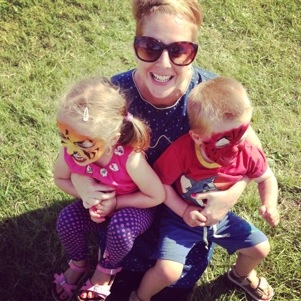Controlled crying means checking on your child at set intervals, increasing the time between visits until they fall asleep.
You put your baby in the cot (after you are sure they are clean, dry and fed) and leave the room. Return after two minutes gently whisper ‘sleepy time’ stroking their tummy for two minutes, then leave.
The idea is not for you to get your child back to sleep but to reassure yourself and your baby that all is well.
You then increase the interval between visits by two minutes each time, starting with two minutes and going up to a maximum of 10 minutes.
Repeat the checking until your child quietens and goes to sleep. You also use this technique if your child wakes repeatedly in the night. Control crying shouldn’t be used if children have health problems or are ill.
Control Crying isn’t everyones cup of tea…
As with all parenting techniques, it is a matter of opinion which techniques work and which don’t. It’s never a case of one size fits all when it comes to children.
All children are unique individuals who will grow in their own way and respond differently to different techniques.
During my 20 year professional career, and as a mum of two little ones, (pictured left,) I have used control crying when the situation has arisen to need to. I do feel however, it is a last resort and that mainly routine can solve any sleep problems that may arise. I’m basing this statement on the 150 emails a week I receive of thanks from parents who use my techniques, and over 20 years experience together with my qualifications in child development and studies.
Leaving a baby crying for long periods of time is not right or fair on them, and can have a negative effect, but for periods of up to 10 minutes using controlled techniques is totally fine.
The NHS and the UK’s top leading parenting experts all support control crying when it is used properly, and this my lovelies is the key. Using a technique properly and not abusing it. Of course you shouldn’t leave a baby to cry for long periods of time, that’s pretty obvious!
In 2010 Dr Penelope Leach caused outrage among healthcare and childcare professionals when she claimed that recent scientific tests show high levels of the stress hormone cortisol develop in babies when no one answers their cries.
If this happens over long periods and repeatedly, it can be “toxic” to their brains. However, this was based on crying for periods of thirty minutes and more, not in controlled environments where control crying techniques are used.
A recent study showed that controlled crying had no adverse affects…
In a recent study by The Murdoch Childrens Research Institute in Australia, 225 six-year-old children were studied. All these children had received behavioural sleep intervention as babies to assess their health – including emotional wellbeing, behaviour and child-parent relationship.
It found techniques such as controlled crying had no adverse affects on the emotional and behavioural development of children or on their relationship with parents.
Anastasia Baker, director of Night Nannies, which helps solve babies’ sleep problems also thinks there isn’t any harm in leaving a baby to cry for a few minutes.
‘If the baby is over six months and on solids, has been winded and fed and there’s no reason for it to be crying then our troubleshooters will be to leave babies for a few minutes, then go back and reassure the baby then leave to them for another few minutes.
There is no harm in it and it can be a really useful way of getting a baby to learn to go to sleep on its own.
So many mothers make the mistake of letting the baby fall asleep on them while feeding and the baby never gets used to going to sleep on its own. We have had clients who have had to rock their child to sleep for literally hours. That is no way for that family to live.’
Mandy Gurney, founder of Millpond Sleep Clinic, added: ‘Obviously no one would advocate leaving a child to cry for long periods. But I think you can leave a child for a few minutes before going in to reassure them. Research has shown that using these techniques to tackle a sleep problem can have a very positive effect on family life.’
Recent studies have suggested that up to half of parents have problems with their child’s sleep patterns between the ages of six months and a year. In some cases this can lead to marital problems, family breakdowns, behavioural problems and maternal anxiety.
So where what are we to do? Do we let our babies cry, or do we pick them up and strap them to us every time they whimper?
As a mother and a professional I think its all about balance. Recognising your babies cry is something that comes quite quickly and understanding their needs and responding accordingly will come naturally to many. For those that struggle with crying and recognising the differences or those with sleep problems there are many professionals that can help.
You can talk to your health Visitor, local parent support group and childrens centre, or you can use the Childcare is Fun FREE parenting advice service. All emails are treated with the strictest of confidence and we help on average 150 parents a week.
Raising children is difficult, stressful and worrying at times, but it is equally rewarding and wonderful. You above all others know what’s best for your baby, so follow what you believe is right and not what others force you to believe.
Control crying isn’t everyones cup of tea, but then neither is breastfeeding and that’s a whole other blog post!








julesey10
Well written piece hon. A pretty idiot proof guide to what controlled crying is (I hope). It so isn’t for everyone but you can’t dispute it works for those who’ve used it as a last resort. Anyone questioning it has obviously not been sleep deprived and at their wits end. Used properly I can’t agree more that children soothing themselves is a good thing. I’ve always put my children to bed awake, right from birth and its a no brainer I’ve had 2 children who slept in good routines from birth onwards and also through the nights from 4 weeks. I hope this post helps lots of mums who’ve been misinformed about controlled crying feel they have something to try when they’ve turned everywhere else. Thank you. xx
xx